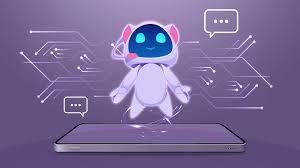AI-powered chatbots are advanced virtual assistants that leverage artificial intelligence (AI) and natural language processing (NLP) to simulate human-like conversations with users. These chatbots automate customer interactions, provide instant responses to inquiries, and enhance customer service efficiency across various industries. This article explores the functionalities, benefits, challenges, applications, and future trends of AI-powered chatbots.
Functionalities of AI-powered Chatbots
- Natural Language Understanding (NLU): AI-powered chatbots use NLP algorithms to interpret and comprehend user queries, regardless of language nuances, syntax, or variations in sentence structure. This enables chatbots to engage in meaningful conversations and accurately extract intent from user inputs.
- Contextual Awareness: Chatbots maintain context across conversations by analyzing previous interactions, user preferences, and transaction history. They personalize responses, provide relevant recommendations, and adapt their communication style based on user behavior and feedback.
- Integration with AI Technologies: AI-powered chatbots integrate with machine learning models, sentiment analysis algorithms, and knowledge bases to enhance decision-making, sentiment understanding, and information retrieval capabilities during conversations.
Benefits of AI-powered Chatbots
- 24/7 Customer Support: Chatbots provide round-the-clock customer service, responding to inquiries, resolving issues, and handling routine tasks without human intervention. This improves accessibility and customer satisfaction by offering immediate assistance.
- Scalability and Cost Efficiency: AI-powered chatbots handle multiple conversations simultaneously, scaling operations to accommodate growing customer demands without additional staffing costs. They streamline workflows, reduce response times, and optimize resource allocation.
- Improved Customer Experience: Chatbots enhance user experience by offering personalized recommendations, proactive assistance, and seamless transitions to human agents when complex queries arise. They reduce wait times, ensure consistency in responses, and empower users with self-service options.
Challenges and Considerations
- Accuracy and Understanding: Chatbots face challenges in accurately interpreting complex queries, understanding context, and providing relevant responses. Ongoing training with diverse datasets and continuous improvement in NLP models are essential to enhance accuracy.
- Integration and Deployment: Integrating chatbots with existing systems, CRM platforms, and backend databases requires seamless deployment and configuration to ensure data privacy, security compliance, and interoperability with IT infrastructures.
- User Trust and Acceptance: Building user trust in AI-powered chatbots involves transparency in capabilities, data handling practices, and clear communication of bot versus human interactions. Addressing privacy concerns and providing opt-out options are crucial for user acceptance.
Applications of AI-powered Chatbots
- Customer Service and Support: Chatbots assist customers with product inquiries, order tracking, troubleshooting, and service requests. They automate ticketing systems, route inquiries to appropriate departments, and provide real-time updates.
- E-commerce and Retail: Chatbots enhance shopping experiences by offering product recommendations, processing orders, and handling customer inquiries about shipping, returns, and promotions. They personalize marketing campaigns and drive sales conversions.
- Healthcare and Telemedicine: AI-powered chatbots support healthcare providers with appointment scheduling, patient education, symptom assessment, and medication reminders. They triage patient inquiries, provide initial diagnoses, and offer mental health support.
Future Trends
- Conversational AI Advances: Future chatbots will leverage advancements in conversational AI, emotional intelligence, and multi-modal communication (e.g., voice, text, visuals) to simulate more natural and empathetic interactions with users.
- Integration with Voice Assistants: Chatbots will integrate with voice-based virtual assistants like Amazon Alexa, Google Assistant, and Siri, enabling seamless voice interactions and expanding accessibility across smart home devices and IoT ecosystems.
- AI Ethics and Trustworthiness: Focus on AI ethics, bias mitigation, and responsible AI practices will shape the development and deployment of chatbots. Transparent AI decision-making processes and adherence to ethical guidelines will enhance user trust and regulatory compliance.
Conclusion
AI-powered chatbots represent a transformative technology in customer service, offering businesses scalable, efficient, and personalized solutions for engaging with customers. As AI continues to evolve, chatbots will play a pivotal role in enhancing customer experiences, driving operational efficiencies, and advancing the capabilities of automated interactions across industries.
